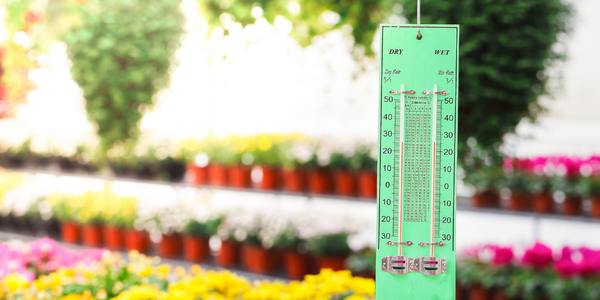Customer Company Size
Mid-size Company
Region
- Asia
Country
- Australia
- India
Product
- Cumulocity IoT
- Apama
- Zementis
- IoT Edge
Tech Stack
- LoRaWAN
- IoT sensors
Implementation Scale
- Enterprise-wide Deployment
Impact Metrics
- Productivity Improvements
- Cost Savings
Technology Category
- Platform as a Service (PaaS) - Connectivity Platforms
- Analytics & Modeling - Real Time Analytics
Applicable Industries
- Agriculture
Applicable Functions
- Logistics & Transportation
- Maintenance
Use Cases
- Farm Monitoring & Precision Farming
- Remote Asset Management
Services
- System Integration
- Software Design & Engineering Services
About The Customer
Powertec Telecommunications is a company that delivers solutions to individuals and businesses worldwide that help them stay connected. Since its inception in 1995, as a one-man team on the Gold Coast, the company has grown into an international operation with offices across Australia and New Zealand. Powertec has been involved in the machine-to-machine distribution business for about ten years and entered the Internet of Things market about two years ago. The company works closely with farmers to ensure they are connected and can communicate, no matter where they may be.
The Challenge
Farms in Australia are vast, averaging around 100,000 acres, with almost a billion acres being farmed in total. The majority of Australia's population is concentrated around the coastline and capital cities, leaving the agricultural land sparsely populated. This lack of population density results in limited Internet connectivity, hindering farmers' ability to adopt the latest technological developments that could help protect their crops and herds. The larger and more remote the farms, the more challenging the internet access and communication. The smallest undiscovered problem can create major issues with crops or herds. Powertec Communications, a service provider, works closely with farmers to ensure they are connected and can communicate, no matter where they may be.
The Solution
Powertec invented a connectivity model - a device that can connect to everything and pick up anything, anywhere. This solved the immediate concerns about connectivity, but the farmers wanted more. They wanted better insights from the data that was coming from their sensors, to give them more control over conditions across the farm. Powertec installed LoRaWAN and connected the existing devices so that they could communicate with each other. Then it rolled out new devices and a single platform that offered a holistic view of all the farm’s devices – from water monitoring soil acidity level in the soil, weather including micro climates and wind levels. In the case of the water pumps, the farm now receives alerts if the pumps are working or not - and can send the runner out only if one needs attention.
Operational Impact
Quantitative Benefit

Case Study missing?
Start adding your own!
Register with your work email and create a new case study profile for your business.
Related Case Studies.

Case Study
Intelligent Farming with ThingWorx Analytics
Z Farms was facing three challenges: costly irrigation systems with water as a limited resource, narrow optimal ranges of soil moisture for growth with difficult maintenance and farm operators could not simply turn on irrigation systems like a faucet.

Case Study
Greenhouse Intelligent Monitoring and Control Solution
Farming Orchids is the most successful form of precision farming in Taiwan, and also the most exported flower. Orchids need a specific temperature and humidity conditions to grow and bloom, and its flowering time may not be in line with market demands, so the price collapses when there is overproduction. Therefore, some farmers began to import automated greenhouse control systems for breeding and forcing, which not only improves quality, but also effectively controls the production period and yield to ensure revenue. In 2012, an orchid farmer built a Forcing Greenhouse of about 200 pings (approximately 661 Square Meters) in Tainan, Taiwan. The system integrator adopted Advantech’s APAX-5000 series programmable automation controllers to build the control platform, coupled with Advantech WebAccess HMI/SCADA software, to achieve cloud monitoring. The staff of the orchid field can monitor important data anytime via smart phone, iPad, and other handheld devices, and control the growth and flowering conditions. System requirements: In the past, most environmental control systems of orchid greenhouses in Taiwan used PLCs (Programmable Logic Controller) with poorscalability and control, and could not be connected to the Internet formonitoring from the cloud. For advanced database analysis and networking capability, the PC platform must be adopted. Therefore, PAC Systems (Programmable Automation Controller) with both PLC programming capabilities andPC functions is a better choice.The environmental control of the Orchid greenhouse switches on and off devices like fan, shade net, cooling/heat pump, liquid flow control, water-cooling wall etc. It is controlled by a control panel of electric controllers, and is driven by a motor, to adjust the greenhouse temperature, humidity, and other environmental conditions to the set parameters.

Case Study
Enabling Internet of Things Innovation in Agriculture
DigiBale, wanted to apply technology know-how and IP from implementations successfully to more agriculture sectors including cotton, forestry, sugarcane and cattle. However, farmers and growers still have worries about the connected technology.

Case Study
Precision beekeeping with wireless temperature monitoring
Honeybees are insects of large economic value and provide a vital service to agriculture by pollinating a variety of crops. In addition, bees provide us with valuable products such as honey, beeswax, propolis, bee venom, etc. Monitoring of honeybee colony health, population, productivity, and environmental conditions affecting the colony health have always been exceedingly difficult tasks in apiculture. Research has shown that even small deviations (by more than 2°C) from the optimal temperatures have a significant influence on the development of the brood and the health of adult bees.





